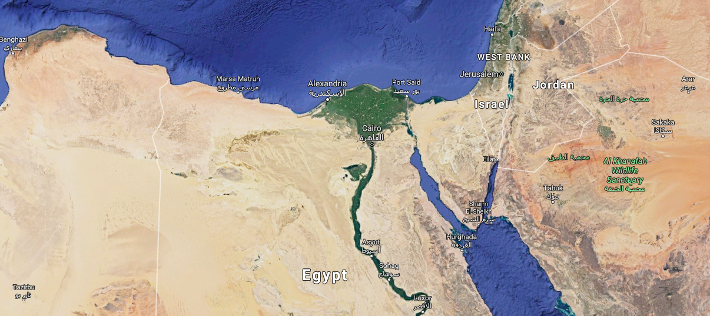
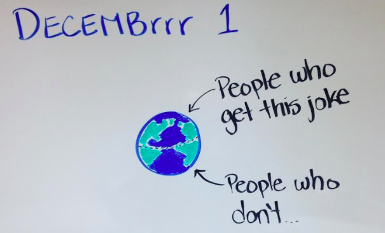
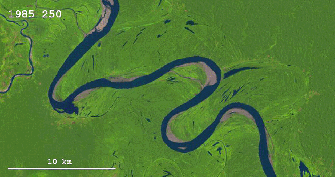
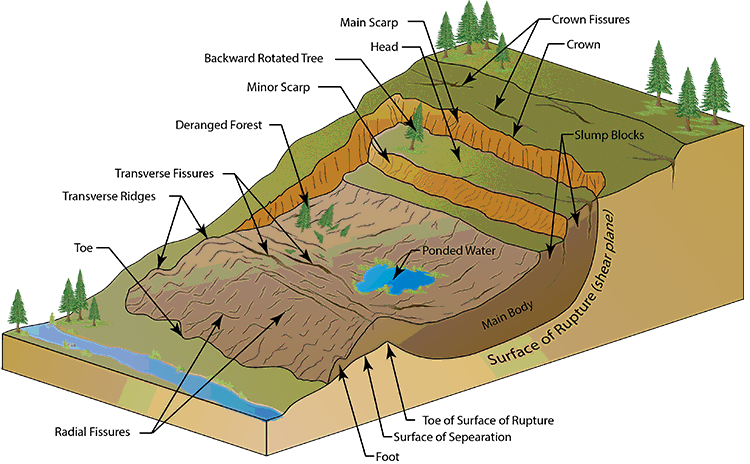
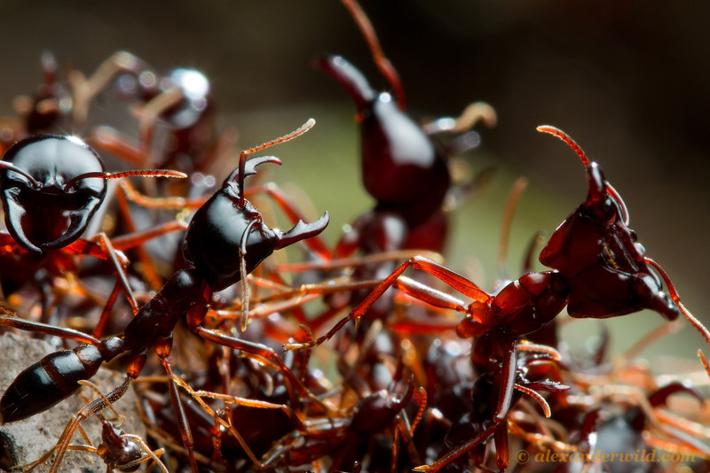
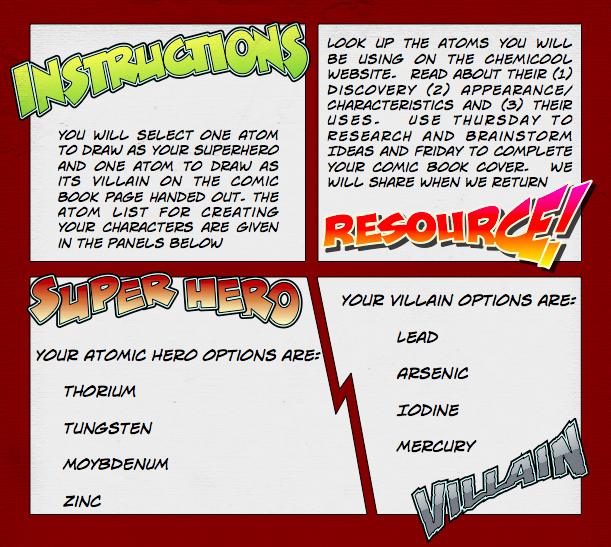
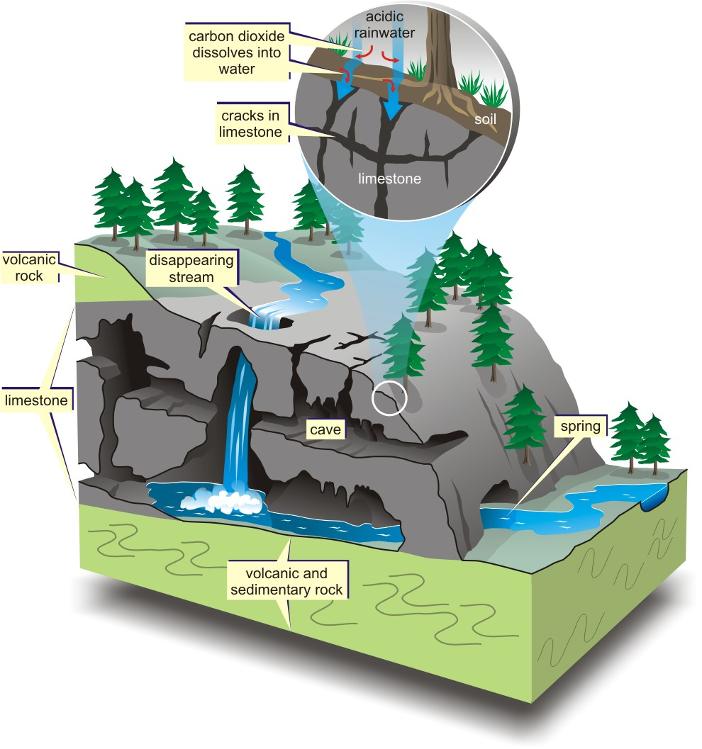

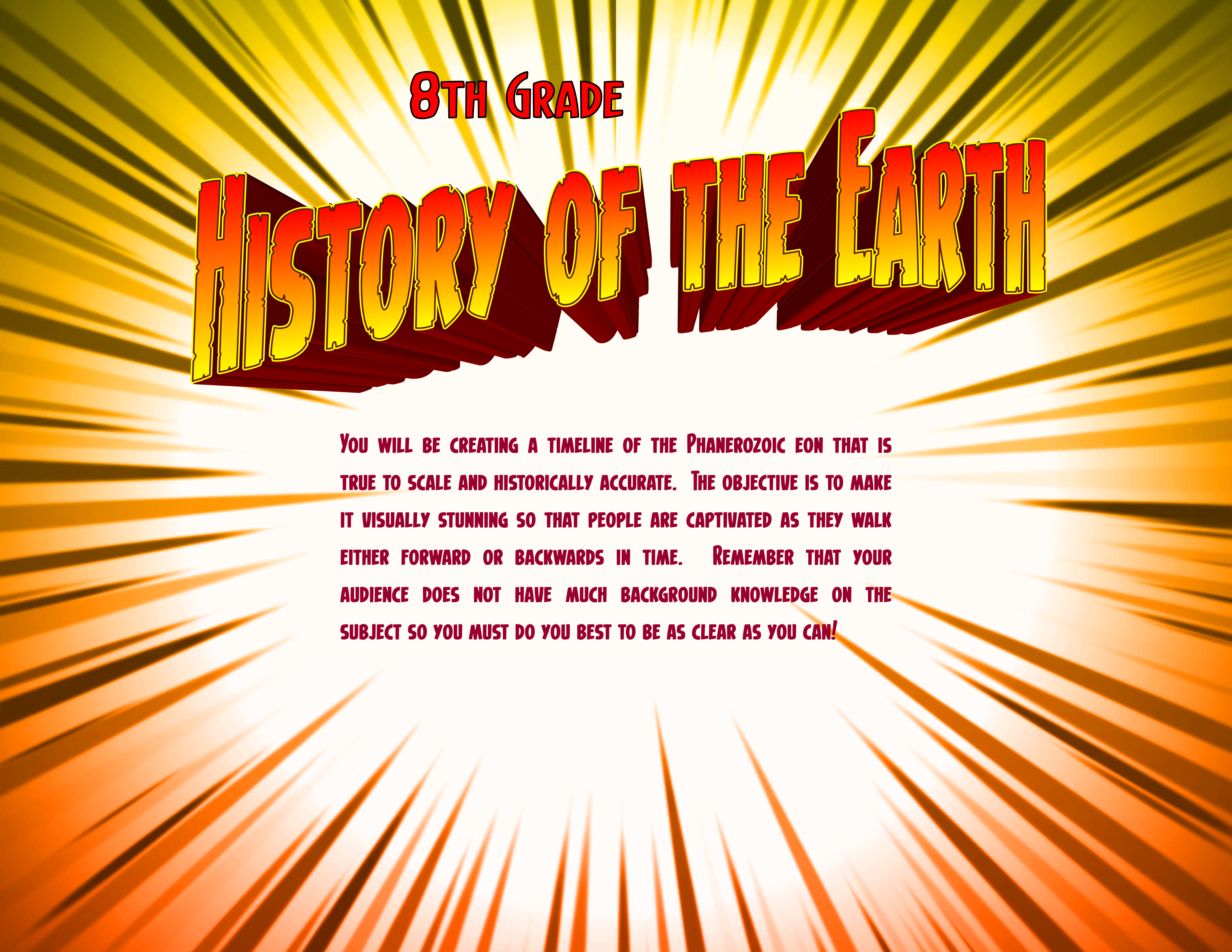
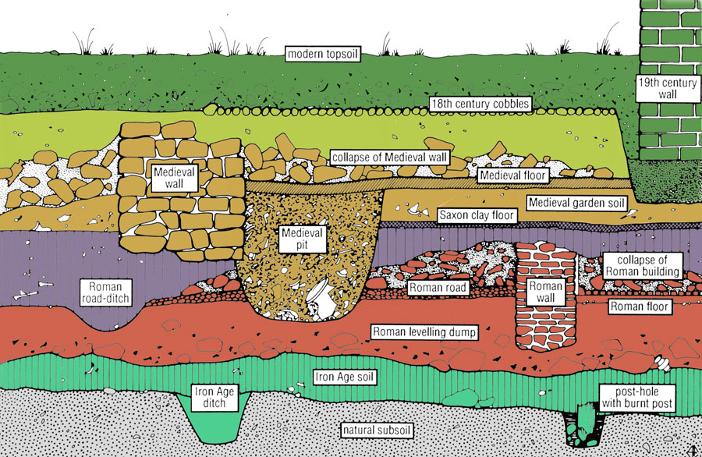

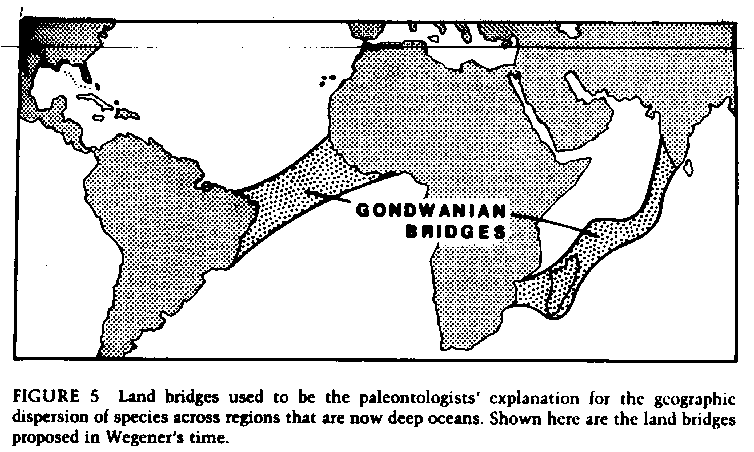
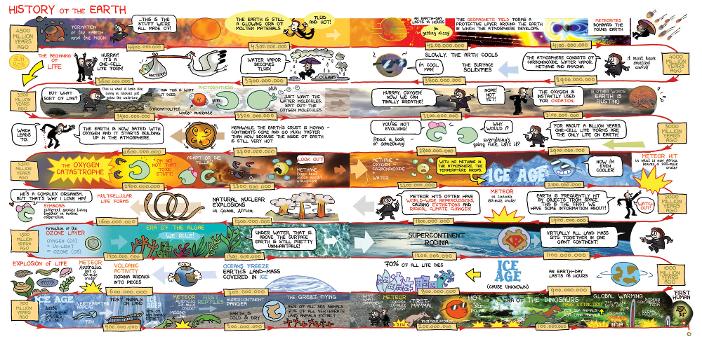
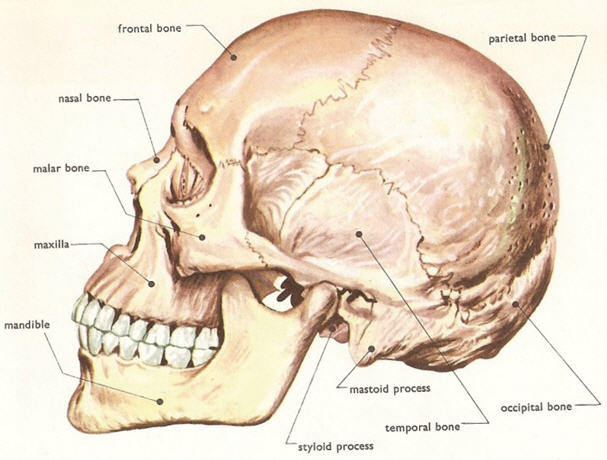
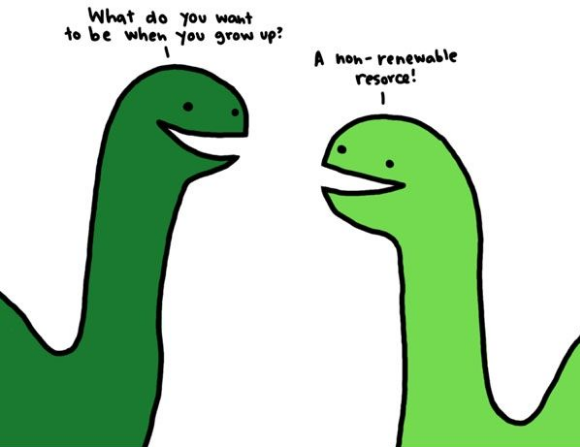

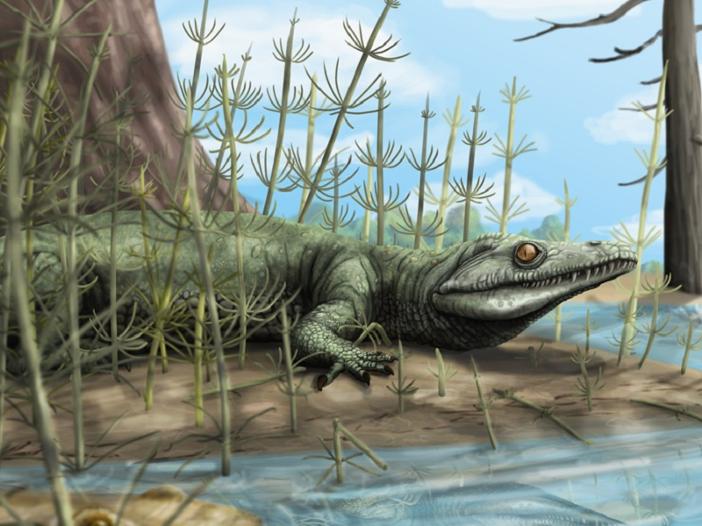
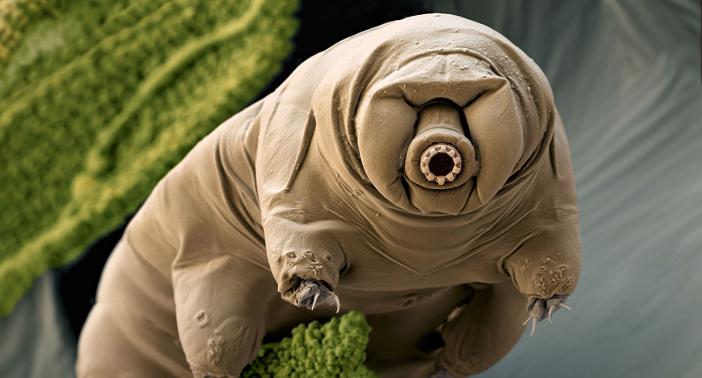

December 16
Learning Objective: Demonstrate your content master on the Quarter 2 Final Exam
December 12 - 15
Learning Objective: Explore this resource in order to learn about what glaciers are and how they shaped the land around them.
The image below is your study guide for the final assessment that we will be having on Friday. If you aren't here we will arrange an appropriate time for you.
Homework: Please use the links below as references for your final on Friday.
BBC Bite Size: River Landforms
DK Find Out: Glaciers
Youtube: Deltas
Youtube: Meanders
Nico's Quizlet (great work dude)
December 9
Learning Objective: Continue working on our story boards from yesterday. These are due on next Tuesday. The cover must be colored but the panels can be B & W
Click here to check our the first dinosaur tail found preserved in amber
Homework: Enjoy your weekend and read the article above if you want to learn about an awesome new find about dinosaurs!
December 8
learning Objective: Reinforce the concepts we have learned for this unit by doing our story board cover art for Finding Dale...The epic saga of a water molecule that will take you on an emotional odyssey through the hydrosphere. Legendary.
Homework: Finish your cover art tonight with color.
December 7
Learning Objective: Today we assess our knowledge on rivers and then we will begin our culminating unit project called, "Finding Dale"
Here is a great resource to help you get started with your brainstorming
Dale is a water molecule that has been separated from his father's hydrogen bond by the Sun. You are going to draw a story board describing his journey throughout the hydrosphere that will reunite him with his father in the ocean.
*I did not get this idea from Finding Nemo
Homework: Continue to brainstorm creative, yet scientifically accurate ways to improve your story board for our Culminating Unit Project. Due on Monday
December 6
Learning Objective: Use Google Maps to learn how a river delta forms, looks, and compares to the middle and upper courses of the river.

Homework: Make sure you can identify the properties of the upper, middle, and lower course of a river.
December 5
Learning Objective: Review the written portion of the assessment from Friday and then investigate how meanders are formed in a river's middle course. You can check November 30 for the links that will help us for today's objective.
Homework: Complete your Meander Hunt on the Google Drive. Try to use the words deposition, erosion, velocity, transport, sediment, and oxbow lake.
December 2
Learning Objective: Assess our knowledge on the upper course of rivers and the water cycle. When you finish you assessment, explore the links below...
Homework: Enjoy your weekend.
December 1
Learning Objective: Review our Particle Size vs Transport graph questions and see how this applies to the way rivers flow and shape the land around them.
We will also take a moment to appreciate Mr. Dan's awesome sense of humor

Homework: Study for quiz tomorrow on the upper course of river systems and the Particle Size vs Stream Velocity graph.
November 30
Learning Objective: Discover how rivers change the land that surrounds them from when they start in the mountains, meander in valleys, and finally when they meet the ocean.
Homework: Complete the River Transportation Google document by the beginning of class tomorrow. I expect detail and accuracy in your answers.
November 28
Learning Objective: Review our Essential Questions and then learn about what rivers are and how they contribute to land formations (how they change land)
We will start class by watching a BrainPop to learn about how rivers flow and then we will check out how a river changes its shape in a 30 year time-lapse
Homework: As an optional reading assignment, you can learn about the Dakota Access Pipeline. I am curious to hear your opinion on the following...
1. Do you agree with the protestors?
2. Can you think of anything similar that has happened like this in Brazil?
3. How does this relate to what we have been learning in class?
November 25
Learning Objective: Discover how people are affect by the water cycle when temperatures drop below 0 degrees C.
Homework: For those students who were not present on Thursday and Friday, do not worry about missing work. You will have time during next week for this
November 24
Learning Objective: Review our assessment from yesterday and clarify any misconceptions or fill in our knowledge gaps. Afterwards, we will begin to look at how people live in rainforests and sustainable wood harvesting versus industrial deforestation.
Homework: Have a nice Thanksgiving
November 23
Learning Objective: Assess our knowledge of the water cycle and afterwards have the option to learn about the deadliest landslides in recorded history...

Homework: If you do not think you did well on the test, you have an option of creating a creative short story about a landslide that uses 20 words from the word bank posted on November 22. Worth +2 points and due tomorrow.
November 22
Learning Objective: Understand how the water cycle works, beginning with energy input from the sun. Tomorrow we will assess what we learned today
You can use the image below if you need to reinforce what we learned and I have included a screenshot of the words you will need to know for the quiz
Homework: Prepare for our assessment tomorrow on the water cycle
November 21
Learning Objective: Finish our presentations to learn about what article accelerators are and then start looking at how water moves in the hydrosphere
Homework: Water cycle quiz on Wednesday
November 16 & 17
Learning Objective: We will be celebrating women in science and learning about the atomic world by investigating particle accelerators and 5 things you should never do with a particle accelerator
Homework: By Friday, your group should have a 10 minute presentation prepared on Google Slides that answers the 3 questions above.
November 14
Learning Objective: Today we will reflect on the scientific aspect of our trip to Tiradentes. We will each make a copy the "Tiradents" document in the Drive
Click here for an awesome documentary on ants

November 3 and 4
Learning Objective: Use our knowledge to create anthropomorphized atoms for a comic book design. This will require the use of both logic and creativity!
Here is the website that you will use as your resource for making your design
Make sure that you review the agenda for Thursday and Friday as well as the instructions posted below in the comic panels. I am trusting you to read this
Thursday Agenda
1. Read the instructions below
2. Use resource link above to learn about the atoms listed below
3. Use the small paper to make a rough draft of your cover design
Friday Agenda
1. Use the large paper (A3) to make the final comic cover design (color) 2. If you finish early you may work on your study guide or explore any of the video links on caves or atoms

Homework: None
November 1
Learning Objective: Reinforce your what you know about the basics of atoms and molecules by creating a visually appealing study guide for beginners. But first lets check out a cool video on rare, stable elements...
Homework: Have study guide complete by Friday at the end of class
October 31
Learning Objective: We will learn how caves are formed so we have a better understanding of what we are looking at when we visit Gruta Casa da Pedra

Homework: You can choose to watch the Planet Earth documentary "Caves"
October 28
Learning Objective: With the Internet down today, we will be doing a high- school style lecture where we will learn how atoms interact to create stars!
Homework: Enjoy your Halloween
October 27
Learning Objective: Today we will review our assessment questions #1-7 to check for gaps in our knowledge. After, we will reinforce what we have learned we will be self-correcting our question #8 in the Google Drive.
Homework: Please complete your self-suggesting edits for Question #8
October 26
Learning Objective: Assess our content mastery of atoms and molecules.
Before we begin our assessment, lets take a fun look at rare, stable elements

Homework: None
October 25
Learning Objective: Learn about the subatomic particles that make up atoms
For additional support, please launch the program from the PBS Learning site
Homework: Use the work we did yesterday and today as well as the homework resource, study for your quiz tomorrow on atoms and molecules
October 24
Learning Objective: We will learn about the molecular structure of water.
Homework: Use this website and this period table to answer the questions on the Google Doc labeled Atomic Study Guide.
o What is water?
o How does water move in the hydrosphere?
o What affect does water have on land formations?
o In what ways are humans affecting the water cycle?
Learning Objective: In preparation for the AASA conference, we will continue to work collaboratively in our geological era teams to create a timeline of the history of the Earth so we can educate the educators coming to visit Barra...
Homework: To be announced...
October 7
Learning Objective: Work collaboratively to begin the design process of our History of the Earth mural. Today, the class accomplished the following...
1. Divided into table based groups and held a random lottery for what table works on which of the three eras in the Phanerozoic.
2. Looked at major points in Earth's history that are of interest
3. Compiled a list of materials that I will acquire by the end of Monday
4. Determined the scale for how much of the wall each era will take up
Homework: Have materials list completed by Monday.
October 6
Learning Objective: We will be using the knowledge we have acquired in this unit to make a historically accurate, scale timeline of the History of the Earth

October 5
Learning Objective: Review our assessments so we can see where our gaps in knowledge are and once we have identified them we will fill them in.
When doing your revisions, please address the following...
1. Scientific accuracy
2. Appropriate chronological sequencing of events
3. Smooth transitions from one event to another
4. Grammar
Homework: Make sure to catch up on all work you might be missing
October 4
Learning Objective: Demonstrate content mastery of relative dating. When you finish the assessment, feel free to explore the NanoSpace Molecularium
Homework: None
October 3
Learning Objective: Today we will synthesize the various skills we have acquired during this unit to create our own relative dating diagrams. Fun.
Homework: Please complete the following...
1. Sign up for Newslea using the following link
2. Read the article, "Stomach bugs in mummified "Iceman" yield clues about human migration" and fill out your English reading log. Please pay special attention to vocabulary and summarizing the main point of the article.
September 30
Learning Objective: Today you will implement the skills you learned yesterday and the vocabulary you acquired to conduct relative dating.
Before we do this, I'd like to answer a question from Malena about silicates
Homework: Enjoy your weekend
September 28
Learning Objective: Today we will learn how use relative dating to interpret the Earth's geological history. This relates to the first essential question

Homework: You will have an assessment on Friday regarding the vocabulary terms and relative dating presented in this lesson. Study accordingly and make sure to finish your real world definitions of our geology terms.
September 27
Learning Objective: Learn about the evolution of the human species and what our ancestors looked like as you travel back in geological time.
Fun Video on the Evolution of Homer Simpson
We will continue our discussion from last week by seeing how our Chapter 2 reading relates to our human skull categorization we worked on last week...
Homework: Read 'The Mysterious History of New York City’s Inwood Mastodons' and fill out your reading log for English.

|
Mastadons of New York City.docx Size : 449.24 Kb Type : docx |
September 26
MAP TESTING (Reading)
September 23
Learning Objective: Learn about the evolution of the human species and what our ancestors looked like as you travel back in geological time.

Homework: Enjoy your weekend and wear sunscreen to protect the DNA in your skin cells from harmful Ultra Violet (UV) radiation from our parent star.
September 22
Learning Objective: Review Wegener's fossil evidence for Plate Tectonics.

Homework: Continue reading Chapter 2 in The Magic of Reality. I have decided to cancel the quiz and instead, I want you to focus on how this chapter relates to the work we have been doing on fossilization and our forensic anthropology work.
September 21
Learning Objective: Using fossils to support Theory of Plate Tectonics (2/2)
Homework: Here is what the rest of your week will look like...
Thursday we will have a Fossilization Requiz
Friday we will have a quiz on Chapter 2 (Magic of Reality)
Friday you can resubmit your Fossilization Short Answer for 1/2 points
September 20
Learning Objective: How can fossil evidence be used to support the Theory of Plate Tectonics? We will conduct a brief lab to explore this.
Key Terms
Homework:
1. By Wednesday at the beginning of class, please have your forensic anthropology work from last week completed.
2. By Friday, please read Chapter 2 in The Magic of reality that I have uploaded into the 8th Grade Google Drive. There will be a short quiz on Friday just to ensure that you have done your reading and to hopefully help your grade. I think the reading is really interesting and I hope you do to!!!
September 19
Learning Objective: Review and give feedback to our peers on their History of the Earth assessments from September 16. We will use the groups below:
Grader Group 1: Carl, Eduardo, Maggie, Malena
Grader Group 2: Karl, Fernando, Marcos, Nico
Grader Group 3: Ana, Isabela, Santiago, Cadu
Grader Group 4: Sofia, So-Yeon, Miguel
Homework: By Wednesday at the beginning of class, please have your forensic anthropology work from last week completed.
September 16
Learning Objective: Demonstrate content mastery of the History of the Earth

Homework: Enjoy your weekend
September 15
Lesson Objective: Continue our teamwork as forensic anthropologists. Use the link below for a 360 degree view of an anatomically modern human skull
Homework: Study for your paragraph assessment tomorrow
September 14
Lesson Objective: Today you will act as forensic anthropologists, placing human fossil specimens into 3 categories based on their physical attributes. Click here for the Smithsonian 3D catalogue of ancient human skulls.
Prior to that we will determine what type of fossil are represented below and we would like to thank Felipe and his family for providing these real samples

Homework: Continue the assignment from Monday
September 13
Lesson Objective: Conclude out discussion of the fossilization process by reviewing the Teyajuagua article
Homework: Continue your homework from September 12
September 12
Lesson Objective: Peer review each others work pointing out areas of strength and areas for growth.
Homework: By Friday, please have the The 25 Biggest Turning Points In Earth's History completed. You have already done the first 10 and my expectation is that by Friday you can answer the following question...
How has the Earth changed from its creation to the present day? The level of detail you provide is up to you but my suggestion is that you put a timer for 20 minutes each night to study and use some time in study hall to work.
September 9
Learning Objective: Assess our knowledge of the process of fossilization

Homework: Make sure you are caught up on all assignments
September 8
Learning Objective: Continue writing our creative short story based around scientific facts of fossilization.
Homework: Creative story due tomorrow as well as fossilization assessment
September 7

September 6
Use the fossil record to inform us on what life was like in pre-historic Brazil. We will be using this link to accomplish todays objective.
Activity #1: Take out your reading from yesterday and prepare to share out your work. We will have two student volunteers present at the board
Activity #2: We will read todays passage and you will write a brief summary on the back of your thought bubble sheet describing the type of fossil that you think Teyujagua represents.

Homework: Creative short story due date moved to Friday before class.
September 5
Lesson Objective: Choose an index fossil from ESRT and write a creative short story about that organism become a fossil. Details are as follows...
1. First must describe the time and the environment that you live in.
2. Then must accurately describe how you became a fossil choosing one of the six types from the 3rd slide posted on September 2nd
3. Finally, you need to tell how you were discovered (this can either be a real or a made up story)
Homework: Have your creative short story finished by the beginning of class on Thursday and study for the fossilization quiz on Thursday.
September 2
Lesson Objective: Review vocabulary specific to the History of the Earth and look at how the process of fossilization occurs.
How Fossils Are Made
Homework: Please have your thought bubbles completed by the beginning of class on Tuesday.
Enrichment: Click this link to see how my home city of LA became the best place on Earth to find extinct species from the Pleistocene Epoch.
September 1
Lesson Objective: Review vocabulary for the History of the Earth and correct our work on ESRT 8 and 9 in order to clarify any errors or doubts.
Homework: Create 10 questions for ESRT 8 and 9 as well as an answer key
Tomorrow while you take you assessment I will be checking for the following
1. Activity #1-3 completed in the Geological History of Time slides
2. The first 10 events completed in the 25 Turning Points in Earths History on the Geological History of Time Slides
3. ESRT 8 and 9 slide completed
4. Snowball Earth questions answered
August 30
Lesson Objective: Review vocabulary from ESRT 8 and 9 and then learn how to read the this reference table (decode it).
Homework: Watch how mitochondria allowed our earliest ancestors to survive an environment that became increasingly toxic during early Earth
August 29
Learning Objective: Use Earth Science Reference Tables 8 and 9 to better understand the geologic history of the Earth

|
Earth Science Reference Tables (ESRT).pdf Size : 1337.021 Kb Type : pdf |
Homework: Complete the 3 questions that we began in class today.
August 26
Lesson Objective: Conclude our introduction to geological time and look at how some extreme organisms can survive Earth's harshest periods in time

Homework: Optional reading to learn more about tardigrades and other awesome extremophiles found on Earth.
August 25
Learning Objective: Continue to learn about the concept of geological time and how the Earth has changed leading up to the evolution of our species
Snowball Earth

Homework: Complete the Snowball Earth Google Drive document. We will collaborate to find the answers tomorrow.
August 24
Learning Objective: Introduction to the concept of geological time and how the Earth's has changed leading up to the evolution of our species

Homework: Complete the work we began in class about our time traveling rabbit. Be detailed in your descriptions and we will review this tomorrow.

|
2.1 Introduction to Geology.ppt Size : 3185 Kb Type : ppt |
HISTORY OF THE EARTH: ESSENTIAL QUESTIONS
o How can graphic literacy help us understand the history of the Earth?
o How can we use fossil evidence to support the Theory Plate Tectonics?
o What can relative dating tell us about the geological history of the Earth?
o How does human evolution play a role in the history of the Earth?
August 23
Learning Objective: Review classroom procedures and understand our responsibilities as a part of this learning community

|
Science Syllabus 2016-2017.docx Size : 38.98 Kb Type : docx |
Homework: Complete your 200 word account of the history of the Universe. The assignment can be found in the 8th Grade Drive
*By next Monday have a 4 ring, 1 in (2.54 cm) binder
August 31
Lesson Objective: Students will use ESRT 8 and 9 to answer various questions regarding the History of the Earth using yesterdays Google Slide
Homework: Complete the first 10 turning points in the history of the Earth